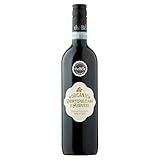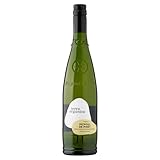What’s in this Guide?
- Introduction to Organic Wines
- Types of Organic Wines
- Best Selling Organic & Natural Wines
- Popular Organic Wine Regions
- What Does Organic Wine Taste Like?
- How to Do a Organic Wine Tasting at Home?
- Pairing Organic Wine with Food
- Health Benefits of Drinking Organic Wine
- How to Properly Store and Serve Organic Wine
- Popular & Budget-Friendly Organic Wines in the UK
- Our Key Takeaways on Organic Wine
- Best Selling Organic & Natural Wines
- Title

Introduction to Organic Wines
Welcome to the world of Organic Wines, where sustainability meets exquisite taste! If you’re a wine enthusiast or simply someone who appreciates the finer things in life, then get ready to embark on a journey through the vineyards of the United Kingdom. In this complete guide, we’ll explore everything from the different types of organic wines to popular wine regions and even how to properly store and serve these delightful libations. So grab your favourite glass and let’s dive into the wonderful world of Organic Wines.
Types of Organic Wines
When it comes to organic wines, there are two main types that you’ll come across: Certified Organic Wines and Biodynamic Wines. Let’s take a closer look at each one.
Certified Organic Wines are made from grapes that have been grown without the use of synthetic pesticides, herbicides, or fertilisers. These wines must meet strict criteria set by certification bodies to ensure their organic status. The use of sulphites is allowed in small amounts to preserve the wine’s quality.
On the other hand, Biodynamic Wines go beyond just being organic. They follow a holistic approach that takes into account not only the vineyard but also its surrounding ecosystem. Biodynamic farming practices promote biodiversity and rely on natural solutions for pest control and soil fertility.
Both types of organic wines offer consumers a more sustainable and environmentally friendly choice when it comes to enjoying a glass of vino. Whether you prefer the simplicity of certified organic wines or embrace the holistic philosophy behind biodynamics, there are plenty of options available in both categories.
Now that we’ve explored the different types of organic wines, let’s move on to discovering some popular regions known for producing these delightful beverages!
Best Selling Organic & Natural Wines
No products found.
Popular Organic Wine Regions
- France: Known for its rich winemaking tradition, France is a premier destination for organic wine enthusiasts. The region of Bordeaux stands out with its diverse range of grape varieties and terroirs. From Merlot to Cabernet Sauvignon, you can find exquisite certified organic wines that showcase the unique characteristics of each vineyard.
- Italy: With picturesque landscapes and centuries-old vineyards, Italy has embraced organic viticulture wholeheartedly. Tuscany, in particular, is renowned for producing exceptional organic wines like Chianti Classico and Brunello di Montalcino. These wines boast complex flavours and elegant profiles that capture the essence of Italian winemaking.
- Spain: Spain’s commitment to sustainable practices can be seen in regions such as Rioja and Catalonia. Organic wineries here focus on indigenous grape varietals like Tempranillo, Garnacha, and Cava grapes used for sparkling wine production. The result? Vibrant reds with robust tannins or refreshing bubbles that dance on your palate.
# Preview Product Price 1 Symington Family Estates Altano Douro Organic Red Wine, 75 cl £12.20 Buy on Amazon 2 Vilarnau Brut Rose Reserva Organic Cava - Vegan Spanish Sparkling Wine, 75cl Bottle £9.59 Buy on Amazon - United States: California leads the way in organic wine production within the US market. Napa Valley shines with prestigious wineries crafting top-notch Cabernet Sauvignon and Chardonnay using sustainable methods from vine to bottle.
- New Zealand: Renowned for its pristine natural beauty, New Zealand also boasts thriving organic wine regions such as Marlborough (known for Sauvignon Blanc) and Central Otago (famous for Pinot Noir). These cool-climate areas produce crisp whites bursting with tropical fruit notes or silky reds brimming with cherry aromas.
# Preview Product Price 1 Nautilus Estate Marlborough Sauvignon Blanc New Zealand White Wine, 75cl £14.65 Buy on Amazon 2 Nautilus Estate Marlborough Pinot Noir New Zealand Red Wine, 75 cl £22.46 Buy on Amazon - Argentina: In South America’s Mendoza region lies a vibrant hub of biodynamic farming techniques applied to Malbec grapes – Argentina’s signature varietal – resulting in bold yet balanced red wines boasting velvety textures and intense flavours.
# Preview Product Price 1 by Amazon Argentinian Malbec, Red Wine, 75cl £7.49 Buy on Amazon 2 Nice Malbec, Argentinian Wine in a Bottle, Juicy & Fruity Red Wine from Mendoza Region, Darkly... £8.20 Buy on Amazon - Australia: With its vast vineyards and sunny climate, Australia is well-suited for organic viticulture. The Barossa Valley, in particular, produces outstanding organic wines like Shiraz and Grenache with deep fruit flavours and smooth tannins.
# Preview Product Price 1 by Amazon Australian Shiraz, Red Wine, 75cl £7.49 Buy on Amazon 2 Terra Organica Primitivo Red Wine - Rich and Velvety Organic Wine - Award Winning Red Wine from... £12.50 Buy on Amazon - Germany: Known for its world-class Rieslings, Germany also has a thriving organic wine scene. Regions such as the Mosel Valley and Rheingau produce crisp, aromatic whites that reflect the unique characteristics of their terroir.
- Chile: Chile’s commitment to sustainable winemaking can be seen in regions like Maipo Valley and Colchagua Valley. These areas are known for producing full-bodied Cabernet Sauvignon and Carmenere using organic practices that prioritise the health of the vines and the land.
# Preview Product Price 1 Cono Sur Bicicleta Viognier Chilean White Wine (6 x 75cl Bottles) £57.41 Buy on Amazon 2 San Andres Merlot Chilean Red Wine (6 x 75cl Bottles) £49.99 Buy on Amazon - South Africa: South Africa’s winemakers have embraced sustainable farming methods in recent years, resulting in top-quality organic wines from regions like Stellenbosch and Swartland. You can find an array of varietals here, from Chenin Blanc to Pinotage, each showcasing the region’s diverse terroir.
No matter which region you choose to explore on your journey through the world of organic wine, you’re sure to discover unique flavours and expressions that reflect the land and the winemaker’s dedication to sustainable practices.
What Does Organic Wine Taste Like?
When it comes to organic wine, one of the questions that often arises is: what does it taste like? Organic wines can offer a unique flavour profile that sets them apart from conventional wines.
The taste of organic wine largely depends on the grape variety and the terroir in which it is grown. However, there are some common characteristics that can be found across different types of organic wines.
Organic wines often have vibrant fruit flavours, with notes of ripe berries, cherries, or citrus fruits. These fruity aromas can be accompanied by floral undertones, such as hints of lavender or rose petals.
In addition to fruitiness, organic wines may also exhibit earthy and herbaceous notes. This could include hints of freshly cut grass or damp soil. These earthy elements contribute to the overall complexity and depth of flavour in the wine.
Another key aspect of organic wine is its freshness and acidity. Organic farming practices tend to promote healthier vines, resulting in grapes with balanced acidity levels. This acidity gives organic wines a lively and crisp character on the palate.
Furthermore, some organic winemakers avoid using excessive sulphites during production, which can result in lower levels of sulphur dioxide in the final product. This could lead to a more natural expression of flavours without any lingering chemical aftertaste.
Tasting an organic wine can be a delightful experience for your senses. From vibrant fruits and floral aromas to earthy undertones and balanced acidity – each sip offers a journey through nature’s finest offerings.
How to Do a Organic Wine Tasting at Home?
Organic wine tasting can be a fun and educational experience, allowing you to explore the unique flavours and characteristics of organic wines right in the comfort of your own home. Here are some simple steps to guide you through the process.
First, choose a selection of organic wines from different regions or grape varieties. This will give you a variety of flavours and styles to compare and contrast. Make sure to consider both red and white wines for a well-rounded tasting experience.
Next, prepare your wine glasses by cleaning them thoroughly to remove any residue that could affect the taste. It’s also helpful to have separate glasses for each wine so that you can keep track of their individual aromas and flavours.
Before diving into the tasting, take a moment to observe the colour of each wine. Hold it up against a white background or light source to get an accurate sense of its hue. Reds may range from deep purple to brick red, while whites can vary from pale straw yellow to golden amber.
Once you’ve admired the colours, it’s time to assess the aromas. Swirl your glass gently before taking a sniff, as this helps release more fragrance compounds. Take note of any fruity or floral scents, as well as more complex notes like spices or earthiness.
Now comes the exciting part – actually tasting the wines! Take small sips and let them coat your palate fully before swallowing or spitting out (if preferred). Pay attention not only to taste but also texture – is it smooth? Tannic? Acidic? Each sip reveals something new about the wine’s character.
As you taste each wine, try comparing them side by side. Notice how they differ in terms of flavour intensity, acidity levels, body weight, and overall balance on your palate.
To enhance your experience further when pairing food with organic wines: salty dishes tend goes well with crisp whites; acidic foods pair nicely with high-acid wines; while rich, bold reds complement hearty meats and cheeses.
Take notes as you go along, jotting down your observations and preferences for each wine. This will help you remember which ones you enjoyed the most and why.
Finally, don’t forget to have fun. Wine tasting is all about exploring new flavours and learning more about your personal taste preferences. With these tips, you can easily host a successful organic wine tasting at home for yourself or with friends and family.
Best Selling Wine Tasting Kits
Pairing Organic Wine with Food
When it comes to enjoying a glass of organic wine, pairing it with the right food can enhance your overall dining experience. The key is to find flavours that complement and elevate each other, creating a harmonious balance on your palate.
For light-bodied white organic wines like Sauvignon Blanc or Pinot Grigio, seafood dishes are an excellent choice. The crispness and acidity of these wines pair beautifully with oysters, grilled shrimp, or a fresh ceviche. The citrusy notes in the wine bring out the delicate flavours of the seafood.
If you prefer a medium-bodied red such as Merlot or Tempranillo, opt for hearty dishes like roasted lamb or beef stew. These wines have enough tannins to stand up to rich meats without overpowering them. They bring out the savoury flavours and add depth to every bite.
For those who enjoy full-bodied reds like Cabernet Sauvignon or Syrah/Shiraz, consider pairing them with bold-flavoured cheeses such as aged cheddar or blue cheese. The intensity of these wines pairs well with strong cheese flavours and creates an explosion of taste in your mouth.
If you’re sipping on a sparkling organic wine like Prosecco or Champagne, don’t limit yourself to just appetisers! These effervescent delights go hand-in-hand with almost any type of food – from sushi rolls to fried chicken bites.
Let’s not forget about dessert! A sweet late-harvest Riesling or Moscato pairs perfectly with fruity desserts like apple pie or peach cobbler. The sweetness of both the wine and dessert intertwine beautifully for a delightful ending to your meal.
Remember that personal preferences play an important role in pairing food and wine. Feel free to experiment and discover new combinations that tantalise your taste buds! Whether you’re hosting a dinner party or enjoying a cosy night in, the right pairing can elevate your dining experience to new heights.
Best Selling Hampers
Health Benefits of Drinking Organic Wine
When it comes to enjoying a glass of wine, many people are interested in the health benefits that come along with it. And if you’re someone who prefers organic options, you’ll be happy to know that organic wine can offer some unique advantages.
One of the key benefits of drinking organic wine is that it is made from grapes grown without the use of synthetic pesticides or fertilizers. This means that you can enjoy your favourite beverage without worrying about consuming harmful chemicals. Organic winemakers also avoid adding sulphites or preservatives during the production process, which can be beneficial for those with sensitivities.
Additionally, organic wines often contain higher levels of antioxidants compared to their conventional counterparts. These antioxidants help protect against free radicals and oxidative stress in the body, potentially reducing the risk of chronic diseases such as heart disease and certain types of cancer.
Furthermore, organic farming practices promote healthier soil and biodiversity. By avoiding harmful chemicals and focusing on natural methods, organic winemakers contribute to a more sustainable environment. So not only are you benefiting your own health by choosing organic wine but also supporting eco-friendly practices.
It’s important to note that moderation is still key when it comes to reaping these health benefits. Drinking excessive amounts of any type of alcohol can have negative effects on your health.
In conclusion, drinking organic wine can provide several potential health benefits due to its natural cultivation methods and higher antioxidant content compared to conventional wines. So next time you reach for a bottle, consider opting for an organic option – cheers!
How to Properly Store and Serve Organic Wine
Properly storing and serving organic wine is essential to ensure the best quality and taste. Here are some tips on how to do it right.
When it comes to storing organic wine, keep in mind that temperature is key. Ideally, the wine should be stored in a cool, dark place with a consistent temperature between 10-15°C (50-59°F). Avoid exposing the bottles to direct sunlight or extreme heat as it can damage the flavour and spoil the wine.
Another important factor is humidity. The storage area should have a humidity level of around 70%, as this helps prevent corks from drying out and allowing air into the bottle.
When serving organic wine, proper glassware plays a significant role. Use clear glasses with stems that allow you to hold them without warming up the liquid inside. This will help preserve its flavours and aromas.
Remember to let your organic wine breathe before serving. Allow it to sit for about 15 minutes after opening the bottle. This allows any trapped gases or unwanted odours from fermentation or bottling processes to dissipate, improving its taste.
Serve your organic wine at an appropriate temperature depending on its type: red wines are typically served slightly cooler than room temperature (around 15-20°C/60-68°F), while white wines are best chilled between 7-13°C (45-55°F).
By following these simple guidelines for storing and serving your organic wines properly, you can enhance your drinking experience and fully enjoy their unique qualities.
Best Selling Wine Fridges
Popular & Budget-Friendly Organic Wines in the UK
When it comes to indulging in organic wines without breaking the bank, the UK offers a range of options for wine enthusiasts on a budget. Here are some popular and pocket-friendly organic wines that you can enjoy without compromising on quality.
- Stellar Organics Cabernet Sauvignon: This South African red wine is not only certified organic but also vegan-friendly. With its rich flavours of blackcurrants and hints of spice, it pairs well with hearty dishes like grilled meats or roasted vegetables.
# Preview Product Price 1 Stellar Organics Running Duck No Added Sulphur Cabernet Sauvignon 2020 6 bottles £67.00 Buy on Amazon - Emiliana Novas Gran Reserva Chardonnay: Hailing from Chile, this white wine is made using biodynamic practices. Its crisp acidity and tropical fruit notes make it an excellent choice for seafood dishes or even as an aperitif.
# Preview Product Price 1 Emiliana Novas Gran Reserva Chardonnay, Chilean White Wine, 750ml £14.10 Buy on Amazon - Yalumba Organic Shiraz: From Australia’s oldest family-owned winery, this red wine boasts aromas of dark berries and spices with a velvety smooth finish. It pairs wonderfully with barbecued meats or pasta dishes.
# Preview Product Price 1 Yalumba Y-Series Viognier 2019/2020, 75 cl (Case of 6) £63.00 Buy on Amazon - La Marouette Chardonnay-Viognier: This French blend showcases vibrant citrus flavours balanced by delicate floral undertones. Enjoy it alongside light salads or creamy cheeses for a delightful combination.
# Preview Product Price 1 La Crema Monterey Chardonnay White Wine, 75 cl £20.61 Buy on Amazon - Cono Sur Bicicleta Pinot Noir Rosé: With its refreshing strawberry and raspberry notes, this Chilean rosé is perfect for summer sipping or pairing with lighter fare such as salads or grilled seafood.
# Preview Product Price 1 2013 Bicicleta Cono Sur Pinot Noir Rosé £19.00 Buy on Amazon
These are just a few examples of affordable yet delicious organic wines available in the UK market today. So why not explore these options and discover your new favourite bottle? Cheers to enjoying great-tasting organic wines that won’t break the bank.
Our Key Takeaways on Organic Wine
To sum up, organic wines offer a unique and environmentally-friendly option for wine lovers in the UK. With their commitment to sustainability and natural winemaking practices, these wines not only taste great but also contribute to a healthier planet.
Key takeaways from this guide include understanding the different types of organic wines such as certified organic and biodynamic wines. Exploring popular organic wine regions, like France, Italy, Spain, and California can expand your horizons and introduce you to new flavours.
When it comes to tasting organic wine at home, remember to pay attention to its unique characteristics like fruity notes or earthy undertones. Pairing them with food can enhance the overall dining experience – think seafood with crisp white wines or red meats with bold reds.
Taking care of your bottle is essential for preserving its quality. Proper storage and serving temperatures will ensure that you enjoy each glass as intended. And finally, don’t forget that there are budget-friendly options available when exploring the world of organic wine in the UK.
So why not give organic wine a try? Whether you’re an avid wine enthusiast or just curious about exploring something new, these sustainably produced bottles are sure to impress both your taste buds and your conscience.
Best Selling Organic & Natural Wines
No products found.
As an Amazon Affiliate, we earn from any qualifying purchases / Images from Amazon Product Advertising API


































